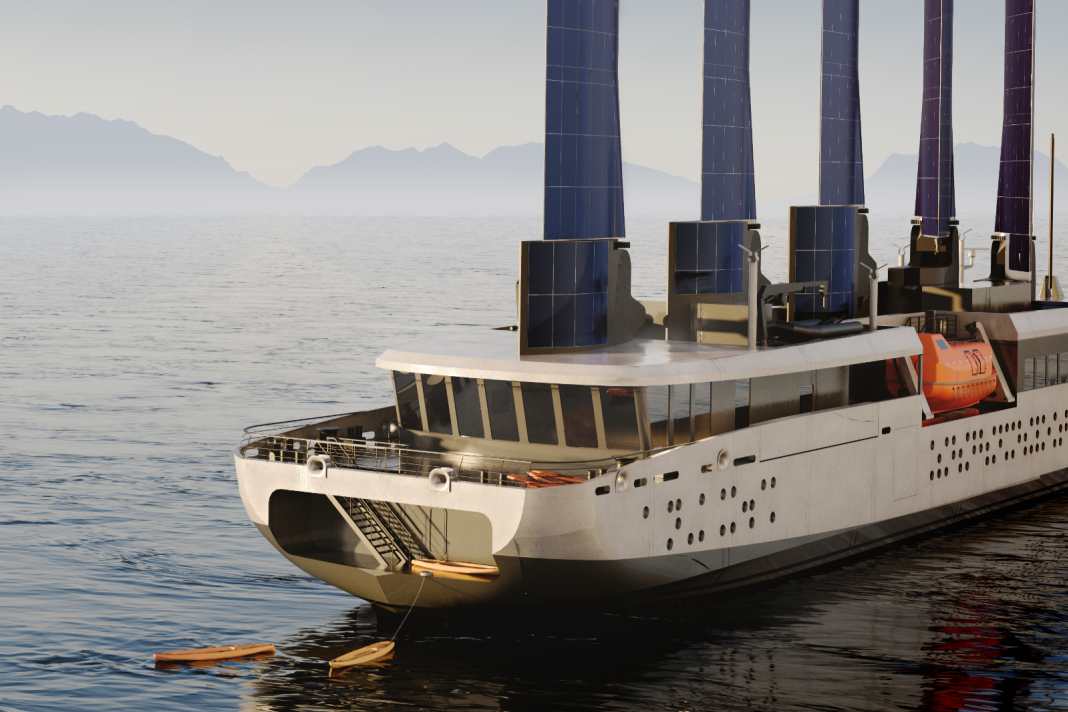"Captain Arctic": 70-metre yacht with the world's first solar-powered wing rig






"Captain Arctic" is Selar's first ship. The company manifesto states: "We longed for travel, not holidays. For expeditions, not cruises. For adventures that looked nothing like what we had experienced the year before or might experience the year after. And, of course, we wanted to explore and see our world in a way that preserved and nurtured our ecosystems." Selar was founded by Sophie Galvagnon, the first female captain in the Arctic, and the entrepreneurs Julia Bijaoui and Quentin Vacher. The founding trio's ship is designed to operate without noise, vibrations or odours and save 90 percent CO2 compared to other cruisers in the Arctic region.
Selar relies on aluminium solar wing rig
Five 35-metre-long wing masts, which cover a total of almost 2,000 square metres of solar cells, will make a major contribution to the almost emission-free operation of the 70-metre-long "Captain Arctic". The Breton start-up Cormoran, together with the design office Ship-ST, developed an aluminium rig whose sails, according to Selar, can be retracted as required like a Swiss army knife. Working on wing rig concepts Inflated Wing Sails, Oceanwings or various Cargo ship. Cormoran does not disclose any details, but informs that the mechanism and material will enable the Mauritian shipyard CNOI Shipyard to manufacture the solar wind system locally using kits. Bureau Veritas has already certified the wings and "Captain Arctic" is scheduled to sail in 2026.
The two electric drive motors will then also generate electricity via hydrogeneration during sailing operations. Energy-saving measures cover many areas. Reverse osmosis will be used to extract fresh water from the sea, and a treatment tank will convert black and grey water into technical water. Instead of heating with energy-intensive fuel boilers, the company uses a pellet boiler that burns wood pellets of recycled origin. Selar CEO Sophie Galvagnon comments: "After ten years in the Arctic, it became unbearable for me to continue steering polluting ships. I decided to dedicate my expertise to this gigantic challenge: to reshape the cruise industry to preserve the remote regions I love so much."
The 19-guest cabins of the "Captain Arctic" Selar already markets
However, Selar's polar voyages will be reserved for a small circle: The 70-metre sailing ship will have 19 guest cabins as well as a restaurant, library and a sauna with an ice bath. Swedish-French designer Joséphine Fossey has created the interiors as "minimalist and refined oases of calm" with a focus on sustainable materials. Each expedition will be led by a hand-picked crew of experienced polar navigators and explorers, who will have a scientific laboratory at their disposal. Selar will forgo fixed itineraries in favour of creating flexible adventures, tailoring routes according to the surrounding wildlife and weather conditions. "Captain Arctic" is scheduled to set off on its first expeditions from 3 to 9 November 2026. Then it will be about diving with orcas in Norway.
